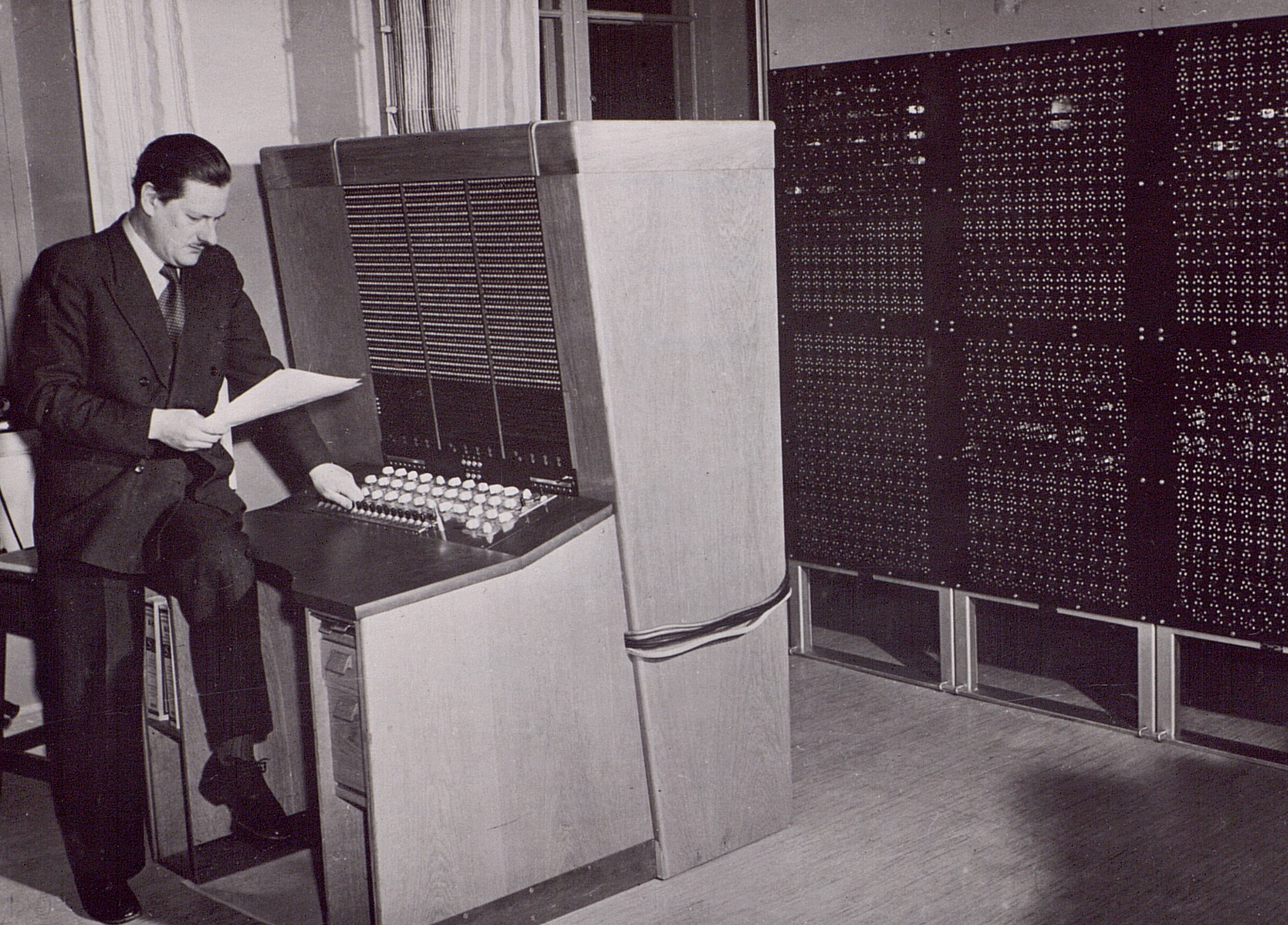BARK (computer) on:
[Wikipedia]
[Google]
[Amazon]
 BARK () was an early
BARK () was an early
Tekn. lic. Olle Karlqvist in memoriam
(in Swedish)
memorial site of one of the engineers behind BARK and BESK. On BARK page there's a technical pdf document (in English): ''The BARK, A Swedish General Purpose Relay Computer'' One-of-a-kind computers Electro-mechanical computers Science and technology in Sweden {{compu-hardware-stub
 BARK () was an early
BARK () was an early electromechanical computer
A mechanical computer is a computer built from mechanical components such as levers and gears rather than electronic components. The most common examples are adding machines and mechanical counters, which use the turning of gears to increment ou ...
. BARK was built using standard telephone relays, implementing a 32-bit
In computer architecture, 32-bit computing refers to computer systems with a processor, memory, and other major system components that operate on data in 32- bit units. Compared to smaller bit widths, 32-bit computers can perform large calcula ...
binary machine. It could perform addition in 150 ms and multiplication in 250 ms. It had a memory with 50 registers and 100 constants. It was later expanded to double the memory. Howard Aiken
Howard Hathaway Aiken (March 8, 1900 – March 14, 1973) was an American physicist and a pioneer in computing, being the original conceptual designer behind IBM's Harvard Mark I computer.
Biography
Aiken studied at the University of Wisconsi ...
stated in reference to BARK "This is the first computer I have seen outside Harvard that actually works."
History
BARK was developed by ''Matematikmaskinnämnden The Swedish Board for Computing Machinery ( sv, Matematikmaskinnämnden, MMN) was a Swedish government agency which built Sweden's first computers: BARK and BESK.
A governmental study into the need for computing machinery in Sweden had been cond ...
'' ( Swedish Board for Computing Machinery) a few years before BESK
BESK (''Binär Elektronisk SekvensKalkylator'', Swedish for "Binary Electronic Sequence Calculator") was Sweden's first electronic computer, using vacuum tubes instead of relays. It was developed by '' Matematikmaskinnämnden'' ( Swedish Bo ...
. The machine was built with 8,000 standard telephone relays, 80 km of cable and with 175,000 soldering points. Programming was done by plugboard
A plugboard or control panel (the term used depends on the application area) is an array of jacks or sockets (often called hubs) into which patch cords can be inserted to complete an electrical circuit. Control panels are sometimes used to di ...
. It was completed in February 1950 at a cost of 400,000 Swedish kronor
The krona (; plural: ''kronor''; sign: kr; code: SEK) is the official currency of the Kingdom of Sweden. Both the ISO code "SEK" and currency sign "kr" are in common use; the former precedes or follows the value, the latter usually follows it ...
(less than $100,000), became operational on April 28, 1950, and was taken offline on September 22, 1954. The engineers on the team led by Conny Palm were Harry Freese, Gösta Neovius, Olle Karlqvist, Carl-Erik Fröberg, G. Kellberg, Björn Lind, Arne Lindberger, P. Petersson and Madeline Wallmark.
See also
*BESK
BESK (''Binär Elektronisk SekvensKalkylator'', Swedish for "Binary Electronic Sequence Calculator") was Sweden's first electronic computer, using vacuum tubes instead of relays. It was developed by '' Matematikmaskinnämnden'' ( Swedish Bo ...
- Binär Elektronisk Sekvens-Kalkylator - Sweden's second computer.
* Elsa-Karin Boestad-Nilsson, a programmer on BARK and BESK
* SMIL - SifferMaskinen I Lund (The Number Machine in Lund)
* History of computing hardware
The history of computing hardware covers the developments from early simple devices to aid calculation to modern day computers. Before the 20th century, most calculations were done by humans.
The first aids to computation were purely mechan ...
References
*External links
Tekn. lic. Olle Karlqvist in memoriam
(in Swedish)
memorial site of one of the engineers behind BARK and BESK. On BARK page there's a technical pdf document (in English): ''The BARK, A Swedish General Purpose Relay Computer'' One-of-a-kind computers Electro-mechanical computers Science and technology in Sweden {{compu-hardware-stub